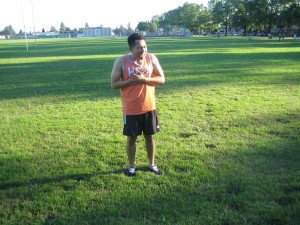A blood blister happens when the skin found in the fingers or toes is pinched or bruised. This blister looks like a blister bubble but the color of the bubble can be red or purple, as if a blood is pooling in the blister. Blood blisters can be painful and popping this blister can cause skin infections.
Blood blister can result from different kinds of causes which includes trauma to the skin such as forceful pinching, burning or scalding, exposure of the skin to chemicals, allergens present on the skin as well as fungal or viral skin infections. Blood blisters can also be caused from a friction particularly a new shoe that buffs a blister on the foot.
Treatment and prevention of blood blisters

- Apply cold compress immediately after an injury to minimize swelling to slow down the leakage and for prevention of bruising. Wrap a few pieces of ice cubes in a wash cloth and apply the compress to the affected areas for 10 minutes.
- Raise the affected areas above the heart in order to stop the bleeding and lessen the pressure. If the blister is on the foot, it can be elevated by laying in a bed and place the foot on few stacks of pillows.
- In helping stop the formation of blood blisters after the skin is caught or pinched between hard surfaces, you have to moisten the skin and make it pliable by drinking lot of fluids and moisturizing the skin daily.
- In reducing swelling, use Epsom salts since it relaxes sore muscles and soothes the affected skin and also can ease the swelling. Mix ¼ cup Epsom salt for every gallon of water. Soak the affected area in this mixture for about 15 minutes.
- Cover the blood blister in order to avoid unintentionally popping it as well as protection from daily activities. If the blister is under constant pressure, cover it with a strip of medical tape.
- If blood blister was accidentally broken, immediately rinse the affected area with soap and water, then apply a thin layer of antibacterial ointment like Neosporin and cover the affected area with a clean bandage. Continue to wash and reapplying a clean bandage every four hours. If you want to learn how to manage a popped open blister, Blood blisters.
- If the blister is not healing, getting worse and becoming painful, it can be infected and symptoms of infection are fever, pain in the affected area, upset stomach, red line spreading from the affected areas and some lesions. If these symptoms are present, it’s time to seek a medical help.
Important tips and warnings
- A blood blister heals with or without treatment.
- Never unintentionally pop or drain a blood blister.
- If a person has a blood blister that is caused by severe cold, he/she can be suffering from frostbite and must seek medical help immediately.
- If the blood blister is causing severe pain, getting worse, and there are symptoms of infections, there is a need for immediate medical attention.
